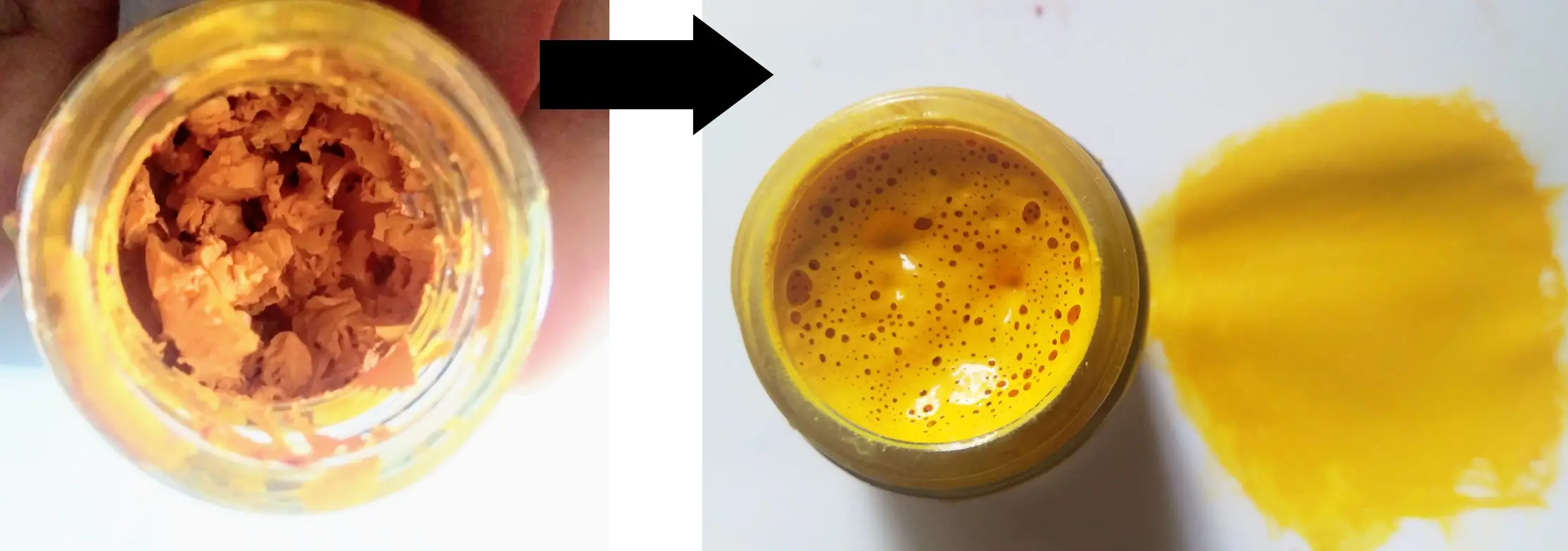I have checked my old acrylic paint bottles recently and found that most of them are dry. I love some of those colors, so it would be nice to reactivate or rehydrate them. To figure out how to reactivate dried acrylic paint I researched on the web and ran my little experiments. Here is what I have found.
Acrylic paint can be reactivated as long as there is at least a hint of moisture left in the paint. Slowly add water, a few drops at a time, and mix well to reactivate or rehydrate acrylic paint. If the acrylic paint is fully dried especially in thin layers, it cannot be reactivated.
There are some other ways of reactivating acrylic paint. There are some methods you should not be trying with acrylic paints although it is mentioned many times on the internet.
Can acrylic paint be reactivated?
Acrylic paint can be reactivated when there is at least a little moisture left in the paint. Usually, there will be moisture in the paint in a bottle or tube that has a lot of paint in it. This is because it is harder to escape moisture from a thick paint layer. You can reactivate these kinds of acrylic paint.
However, if the paint is fully dried or cured it cannot be reactivated. This is true for acrylic paint that is left outside with direct exposure to air for a long time. Because they can be easily dried out.
I have tried moistening a layer of fully dried acrylic paint. It did not react with water in any way. It has become a water-resistant and flexible material with hard and rubbery nature. It is the nature of acrylic paint to dry into a plastic layer of paint that is permanent and water-resistant.
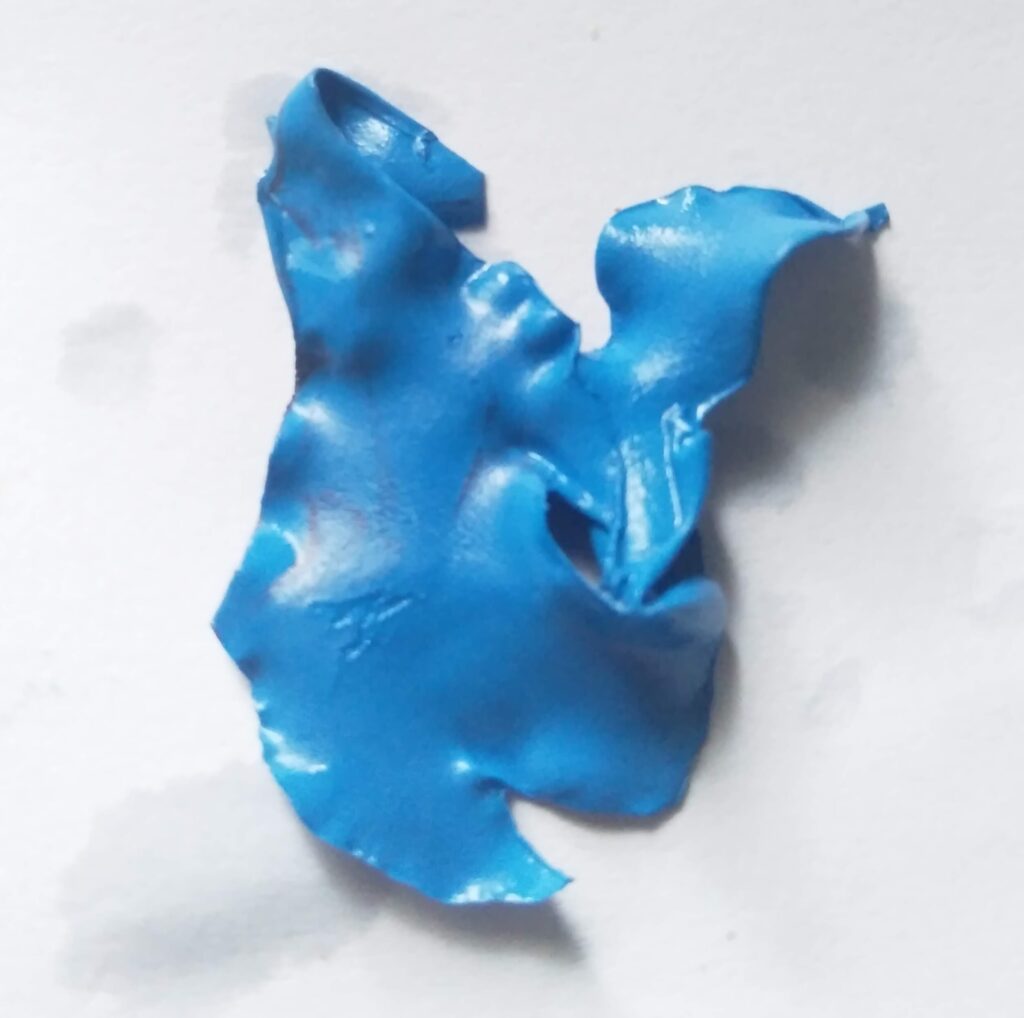
How to reactivate or rehydrate dried acrylic paint?
Water can be used to reactivate dried acrylic paint that has a hint of moisture in it. Mix a few drops of water at a time with dried acrylic paint well. The more dry the acrylic paint, the more time you will need to mix. After mixing thoroughly the acrylic paint will become liquid and you can use it as before.
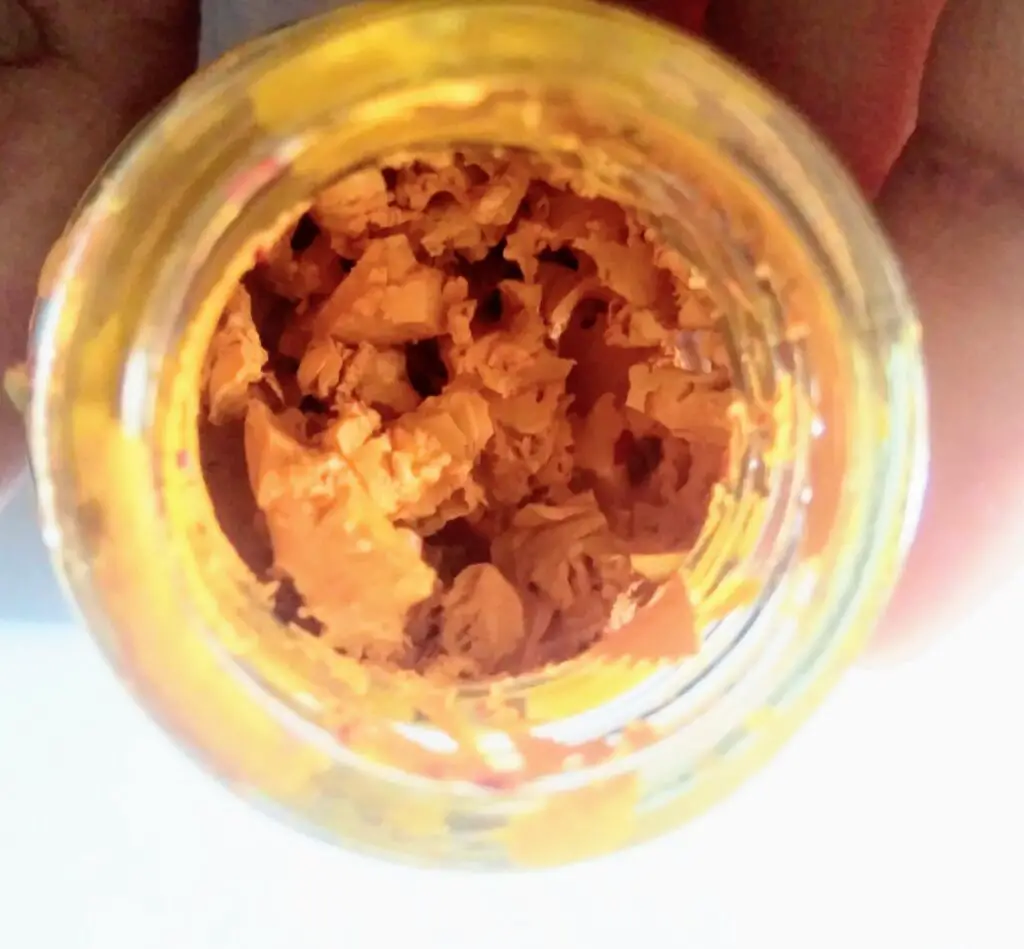
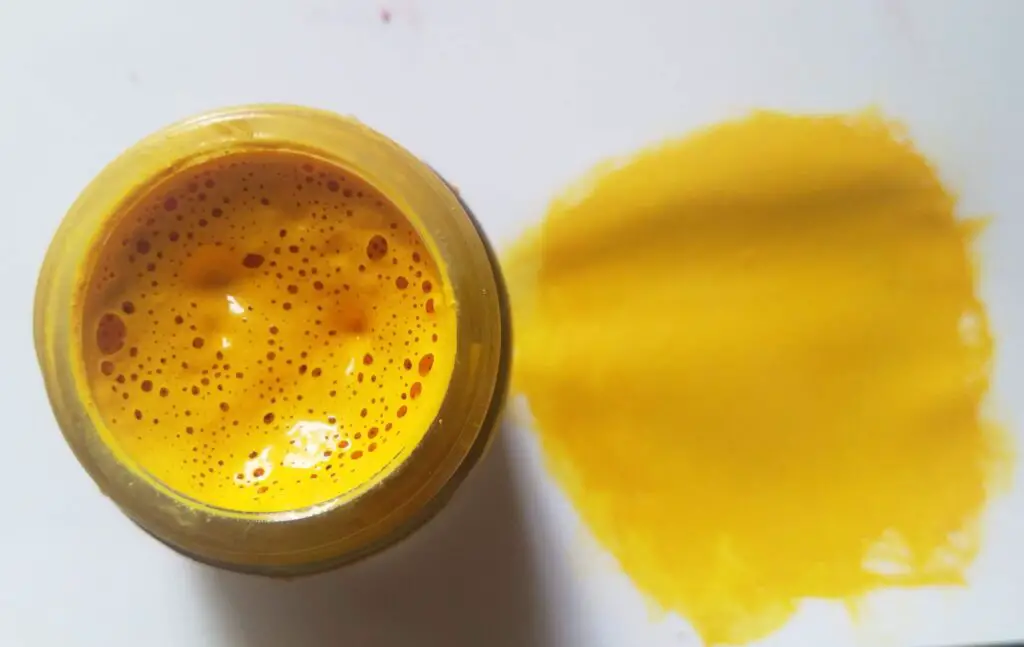
As you can see the acrylic paint I have reactivated has a lot of bubbles in it due to mixing the paint thoroughly. But that does not affect the painting. The paint application was smooth. If not, add some more water to smooth it out.
I have tried the same method with another type of acrylic paint. It worked the same for that acrylic paint as well. You just need to have at least a little moisture left in the paint in order for this to work.
To increase the flow of acrylic paint you can use an acrylic flow aid or flow enhancer while mixing it with water. Follow the instructions on the label when using a flow enhancer as you need only a little to make acrylic paint flow. Again I would not use a flow enhancer where I can use water, even though a flow enhancer does not do any harm to the quality of acrylic paint.
Always check the water-resistant nature of the reactivated acrylic paint before using it for your project. Paint a swatch of reactivated acrylic paint on a piece of thick paper like watercolor paper or a canvas and let it dry. Then try to reactivate it with a brush using a little water.
If the reactivated acrylic paint is not permanent after drying I suggest you use it with an acrylic medium like acrylic matte medium or acrylic gloss medium. However, I found that to make those reactivated acrylic paint water-resistant after applying, you need to dry them out at least overnight.
Do not use these reactivated acrylic paint on paintings you need them to be of archival quality. Instead, use them for your practice pieces.
Keep in mind that you cannot re-activate fully dried acrylic paint. If the paint in the container is thick there is a high chance that the paint to remain moist even if it looks fully dried. However, if the paint is fully dry there is no chance of rehydrating acrylic paint.
I have written a whole article about the 11 best ways of saving acrylic paint for reusing. Reactivating acrylic paint is one of them. You will find tips and tricks to save acrylic paint and money at the same time there.
What not to do to reactivate acrylic paint?
As I have researched on the internet there are many ways to go about rehydrating, reactivating, reviving, or making acrylic paint usable again. But not all of these methods are good for acrylic paint. I will describe below what not to do when reactivating acrylic paint.
You should not use alcohol or any alcohol product to reactivate acrylic paint. In some cases, alcohol can be used to dissolve dried acrylic paint but has moisture in it. If not alcohol will not dissolve acrylic paint. It will just break dried acrylic paint into small chunks.
You can use alcohol on already moist, but dry acrylic paint and dissolve it. But this does not make the acrylic paint binder usable again. The qualities of acrylic paint will not remain the same. You might have seen alcohol is used to thin acrylic paint when airbrushing. But the best choice would be to use an acrylic airbrushing medium. This way you will not lose the acrylic paint properties.
I would never use alcohol on acrylic paint that is still moist and can be easily reactivated using water. Because water will not harm acrylic paint’s qualities. You can always mix in a little acrylic medium to get back the acrylic polymer binder qualities when water is used.
I have written a whole article about ‘How to Fix an Overworked Acrylic Painting- a step by step guide‘. You will find many tips and tricks to fixing as well as avoiding overworking acrylic painting next time.
How to prevent acrylic paint from drying out?
Prevention is always better than trying to fix acrylic paint. Take good care of your acrylic paint so that it would not dry sooner or later. I have written a whole article about ‘Why is acrylic paint not drying? (5 influencing factors)‘. There you will find a detailed explanation of the factors influencing acrylic paint drying.
Here I will discuss briefly what factors influence acrylic paint drying and how to control them to prevent acrylic paint from drying. In general, temperature, humidity, airflow, and the thickness of the paint affect acrylic paint drying.
Always store and paint your acrylic paint between 70 to 90oF( 21oC to 32oC), with relative humidity less than or equal to 75%. Never keep the paints in temperatures above 90oF (32oC) or below 50oF (10oC) as acrylic paint can dry in chunks or separate in those temperatures respectively.
I have written a whole article about why acrylic paint becomes thick and the best ways to fix it. You will learn about different consistencies of paint and adverse environmental factors that make acrylic paint thicker than usual.
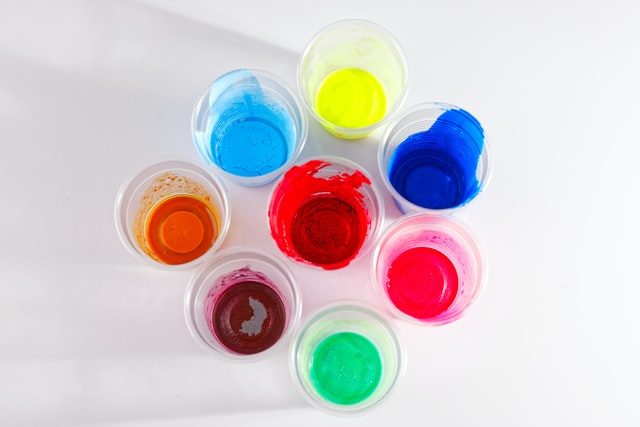
High temperatures can easily dry your paints and make them chunky. This happens to most people when they leave their paint inside the car for a long time, as the temperature inside the car can get high.
Exposure to air influences acrylic paint drying. To prevent entering air into the paint container, seal the lid of the paint container well. After every paint session clean the openings and lids of the paint tubes, so they can be closed and form an airtight seal.
This is one of the main reasons why your acrylic paint might be drying. Sometimes the container may not be formed to make an airtight seal, so the paint can dry easily. This can usually happen with low-quality acrylic paints.
This will not be a problem if you use artist-grade acrylic paints or a good student-grade acrylic paint brand like Liquitex Basics. These acrylic paints are all manufactured in good quality with good quality paint containers that are air-tight.
I have written a whole article about ‘How can you tell if acrylic paint is bad? (common signs)‘. You can find many ways acrylic paint can go bad including drying out and how to avoid or fix each case there.
Conclusion
Reactivating acrylic paint is possible with acrylic paint that has even a little moisture left in it. However, rehydrating or reactivating acrylic paint is not easy and the reactivated acrylic paint will not be of archival quality. The best way to go about it is to take care of your paints before they dry out. Clean the paint tube openings after every paint session and don’t keep acrylic paints at a high temperature. Prevention is always better. Happy painting!

